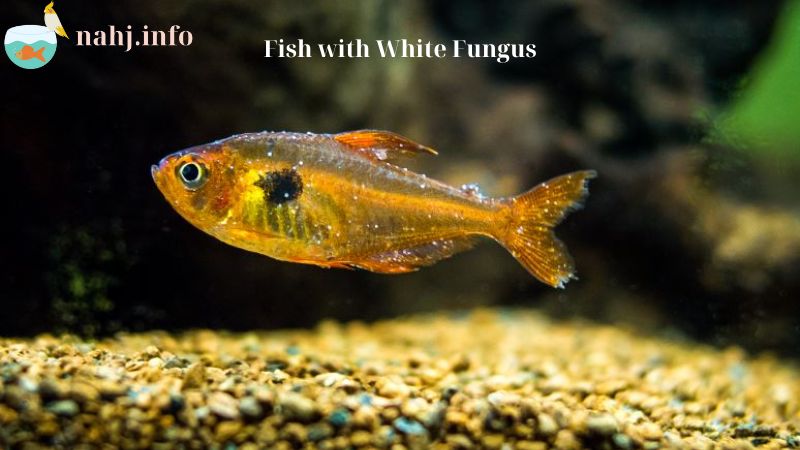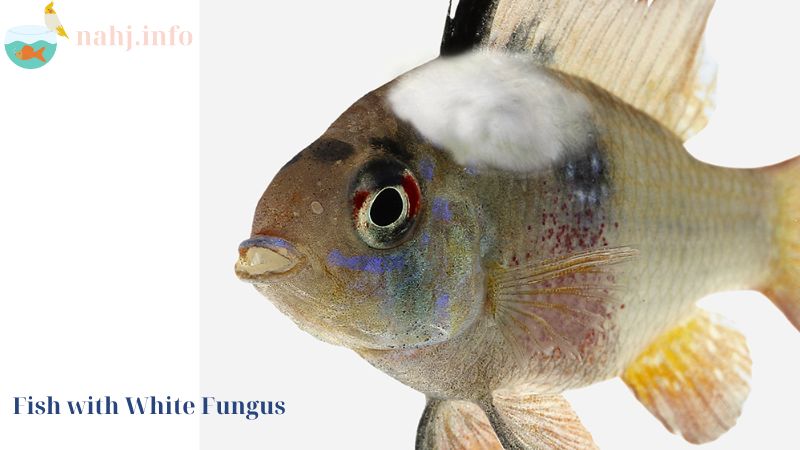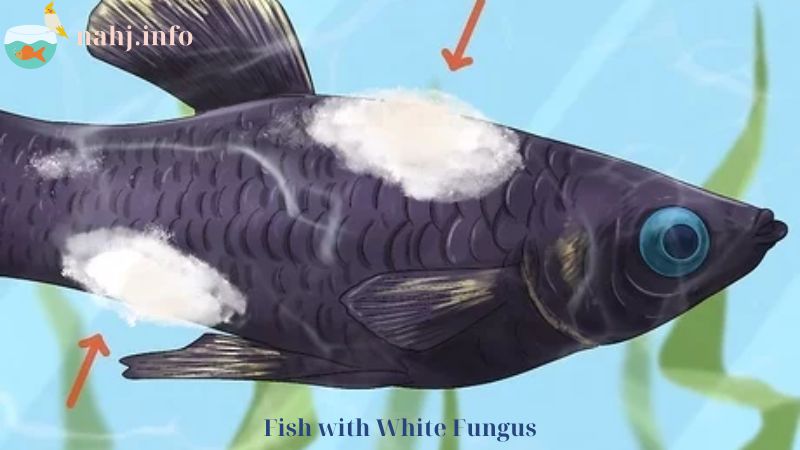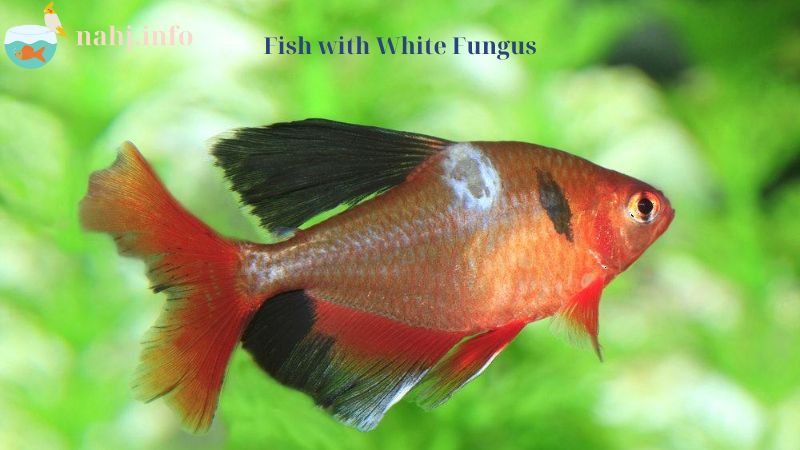Fish with White Fungus is one of the most common and dangerous diseases for ornamental fish, including both freshwater and saltwater fish. This disease not only makes the fish lose their aesthetic appeal but can also be fatal if not treated promptly. In this article, nahj.info will learn in detail about the causes of white fungus, its symptoms, and effective treatments to protect the health of the fish.
What is White Fungus?
White fungus, also known as Ichthyophthirius disease or “Ich”, is a disease caused by the parasite Ichthyophthirius multifiliis. This is a highly infectious single-celled parasite that attacks the skin, gills, and fins of fish. This parasite thrives in poor water quality and when the fish’s immune system is weakened.
Causes of Fish with White Fungus

Fish with White Fungus can appear due to many different causes, including:
1. Poor Water Quality
The water in the aquarium needs to be maintained clean and stable in terms of indicators such as pH, temperature, and ammonia and nitrite concentrations. Dirty or unstable water environments will weaken the fish’s immune system, creating conditions for parasites to develop.
2. Sudden Changes in the Environment
Sudden changes in temperature, pH or salinity of the water can shock the fish, reducing their resistance and making them susceptible to white fungus.
3. Stress
Fish that are stressed due to too many fish in a cramped space, lack of hiding places, or being attacked by other fish are also more susceptible to disease.
4. Newly Purchased Fish
Newly purchased fish often carry pathogens from the store or previous tank. If not properly isolated and checked, new fish can spread white fungus to the entire aquarium.
Symptoms of Fish with White Fungus
Early recognition of Fish with White Fungus symptoms is important for prompt treatment and prevention of spread. Common symptoms include:
1. White Spots on Skin and Fins
The most obvious symptom of white fungus is the appearance of small, sand-like white spots on the skin, gills, and fins of the fish. These white spots are where the parasite attaches and grows.
2. Fish Scratching at Decorations or Tank Walls
Fish with white fungus often feel itchy and scratch themselves on objects in the tank such as rocks, aquatic plants, or the tank walls.
3. Abnormal Swimming Behavior
Fish with white fungus may swim abnormally, be lethargic, or swim more slowly than normal. They may also float to the surface of the water to search for air due to difficulty breathing.
4. Loss of Color
The color of the fish may become pale or lose its normal brilliance when infected with white fungus.
5. Rapid Breathing
The fish may breathe more rapidly due to the parasite attacking the gills, reducing the ability to absorb oxygen.
How to Treat Fish with White Fungus

Treatment of white fungus should be done as soon as the first symptoms are detected to prevent the spread and protect the health of the fish. Here are effective treatments:
1. Use Antifungal Medication
Antifungal medication is the most common and effective treatment method. Medications containing ingredients such as formalin, malachite green, and methylene blue are often used to kill the parasite. You should follow the manufacturer’s instructions and ensure that the medication is evenly distributed in the water.
2. Increase Water Temperature
The parasite Ichthyophthirius multifiliis cannot tolerate high temperatures. Raising the water temperature to around 85-86 degrees Fahrenheit for a few days can help kill parasites. However, you need to make sure your fish can handle this temperature and increase the temperature slowly to avoid shocking your fish.
3. Regular Water Changes
Regular water changes help remove free-floating parasites from the water and maintain a clean environment for your fish. Change around 25-50% of the tank water each week and make sure the new water is dechlorinated and has a similar temperature to the tank water.
4. Use Salt
Salt is a natural and effective way to treat white fungus. Adding around 1-2 teaspoons of non-iodized salt per gallon of tank water can help kill parasites and help your fish recover faster. However, be cautious when using salt on sensitive fish.
5. Boost Your Fish Health
Support your fish’s immune system by providing nutritious food and vitamin supplements. Reduce stress on fish by providing a comfortable living environment, adequate swimming space and hiding places.
Prevention of Fish with White Fungus

Prevention is the best way to protect fish from white fungus. Here are some effective preventive measures:
1. Check New Fish
Always check and quarantine newly purchased fish for at least 2 weeks before introducing them into the main tank. This helps detect and prevent pathogens from spreading from new fish to existing fish.
2. Maintain Good Water Quality
Change the water regularly, use an effective filtration system and check water parameters regularly to ensure the water environment is always clean and stable.
3. Reduce Stress on Fish
Avoid overcrowding a tank and provide adequate swimming space and hiding places. Avoid sudden changes in water temperature, pH, or salinity.
4. Use Quality Food
Provide nutritious and suitable food for fish to enhance the immune system and resistance. Avoid overfeeding to avoid water pollution.
Conclusion
Fish with White Fungus disease is a dangerous disease but can be controlled and treated effectively if detected promptly and applied properly. Maintaining a good living environment, providing a reasonable diet and taking preventive measures will help protect your fish from white fungus disease and many other diseases. Hopefully, the information in this article will help you take care of your fish effectively and bring joy from raising healthy and beautiful fish.

